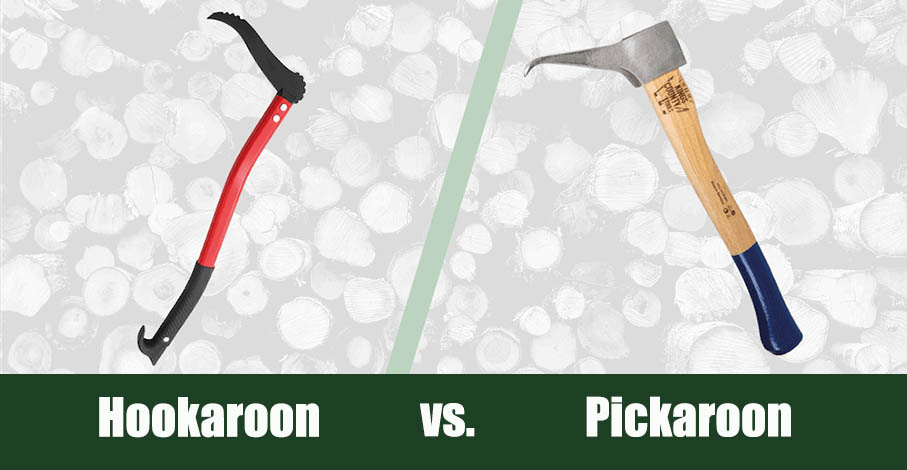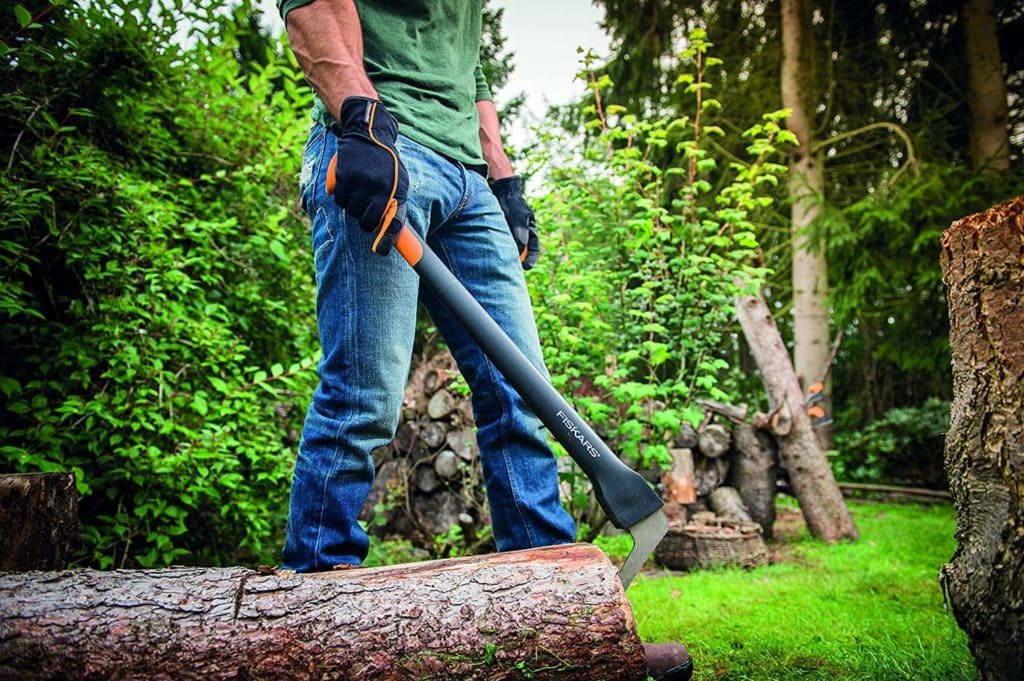Hookaroon vs Pickaroon: What’s the Difference?
-
- Last updated:


To people experienced in the woodworking fields, hookaroons and pickaroons are common tools that are more than adequately understood. However, they are so similar some people get confused. It is difficult to distinguish between the two tools because they serve the same function and have subtle differences. Still, it is essential to know the difference to maximize the design and use of the hookaroon and pickaroon.
The only difference between the pickaroon and the hookaroon is the spike shape. On a hookaroon, the spike has more of a hook shape, so it’s more difficult for the wood to slip off. Since this is such a subtle difference, we’ll discuss more about the pickaroon and hookaroon.

Overview of a Pickaroon
A pickaroon is a woodworking tool for stacking, dragging, and rearranging wood. It is also great for loading and unloading logs and cutting wood. It minimizes the time you have to bend over to rearrange the wood, making it useful for woodworkers or those who rearrange wood frequently.

Design
A pickaroon has a similar design as a hammer or axe. It typically has a wooden handle with a steel head. The wooden handle is long to provide a good grip and length when working with the wood. A standard ax has an almost identical handle to a pickaroon.
The pickaroon’s head distinguishes it from an axe, hammer, and hookaroon. Its head includes a wedge and protruding spike. The spike digs into the wood so you can remove it or move it around without using your hands.
A pickaroon will either have a straight spike or a slightly bent one. The straight spikes are easier to dig in, but the wood can easily slip off if you are not careful or don’t use enough force.
Challenges
The main challenge of the pickaroon is that the wood can slip off the spike. This is especially true if the spike is straight and not curved. If the wood you are working with is lightweight, you shouldn’t run into this issue too much.
For heavier wood, however, you must apply a lot of force and pressure when driving the spike into the log.
Best For
Since pickaroons can have trouble keeping the wood on the spike, they are best for lifting, dragging, stacking, or rearranging smaller pieces of wood. The light wood is less likely to fall off, and you don’t have to put a lot of muscle into it when driving the pickaroon into the log.
- Great for moving pieces of wood
- Minimizes how many times you bend over
- Spike won’t get stuck in the log
- Requires more force to use
- Larger logs may fall off the spike

Overview of a Hookaroon
In many ways, a hookaroon is just like a pickaroon. In fact, it is helpful to think of a hookaroon as being a type of pickaroon. Like the pickaroon, a hookaroon is a tool used for moving, rearranging, or splitting pieces of wood.

Design
The difference between the hookaroon and pickaroon lies in the shape of the head. While the pickaroon often has a straight or slightly bent spike at the end of the head, hookaroons have a hook-shaped spike. This means that the spike is bent inwards, which is why it is called a hookaroon.
The hook shape of this spike is beneficial in that it minimizes the chance of the wood slipping. The hook ensures that the spike digs into the wood at an angle so it doesn’t accidentally slip or wiggle off, even if the wood is slightly heavier. The handle is the same on both the pickaroon and hookaroon.
Challenges
The main challenge of the hookaroon is that you can accidentally get the spikes stuck into the piece of wood. If you use too much force while inserting the spike into the log, it can be incredibly easy to get it stuck.
Best For
With the advantages of the pickaroon, it is best to use it for heavier or larger wood pieces. You don’t want to risk getting your spikes stuck unnecessarily. So, only use this tool if you fear the wood falling off the spike.
- Great for moving larger pieces of wood
- Minimizes how many times you bend over
- Hooked spike prevents logs from falling off
- Spike can get caught in log
- Provides too much traction for smaller pieces of wood
When to Use a Pickaroon vs Hookaroon
You will generally select a pickaroon or a hookaroon based on the type of wood you are moving. Using a pickaroon on lightweight wood is ideal. It doesn’t have enough weight to slide off the tool if you provide enough force.
You should select a hookaroon if you are moving or rearranging larger pieces of wood. Larger pieces of wood have a lot more weight, making them more susceptible to sliding off the tool during movement. Select the hookaroon for heavier woods to make your job easier.
Factors to Consider
Handle Length
The whole point of a pickaroon or hookaroon is to minimize the number of times you have to bend down to touch the logs. For this reason, you need to consider the length of the handle to maximize the efficiency of the tool.
If the handle is too short, you will still have to bend over to move or rearrange the wood. This can cause unnecessary back strain and other issues. In contrast, a handle that is too long will make it difficult to maneuver around properly. Select a handle length based on your height.
Handle Material
Most handles are made of wood because it is lightweight and affordable. However, wood can be difficult because it is more susceptible to damage and requires you to store it properly in the hot season.
If you live in an especially hot area or are worried about damage, you can always look for a lightweight metal tool. Handles made of composite metal will still be lightweight, but they will be slightly heavier and cost a bit more.
Durability of the Spike
The spike is the most prominent feature of the pickaroon and the hookaroon. You want to make sure to get a spike that is highly durable and will last you a long time. If the spike breaks, the tool is entirely useless.
Look for a spike that is made from rust-free material. This ensures that the tool will last you a long time, regardless of your work environment.
How to Use Them
Using either the hookaroon or pickaroon is easy. You can use them just as you would an ax. You drop them from above or swing them upward alongside your leg. The head should lodge into the piece of wood from whichever direction you swing.
Since it has a spike at its end, you must be incredibly careful when using it.

Conclusion
A pickaroon is a woodworking tool that can help you move and rearrange wood without bending down. A hookaroon serves the same purpose but has a hooked head to keep the wood attached to the tool. You can use the pickaroon when moving lightweight and small pieces of wood since it is powerful enough to move the logs but won’t get stuck within them.
In contrast, select a hookaroon when moving bigger pieces of wood since the hook ensures the wood won’t fall off. No matter which tool you use, make sure to practice good safety techniques when using them. They can be extremely dangerous, and you don’t want to injure anyone.
See Also: Best Pickaroons & Hookaroons
Contents

